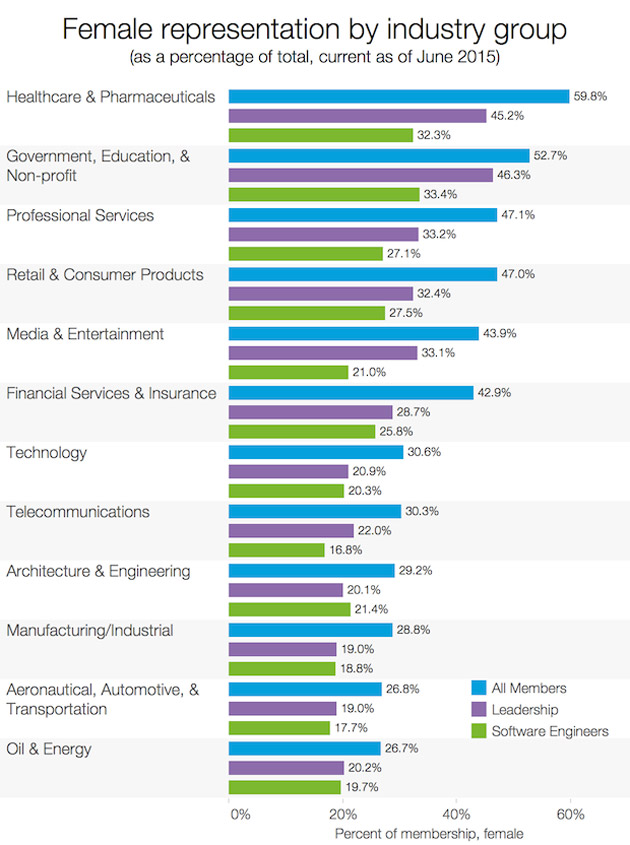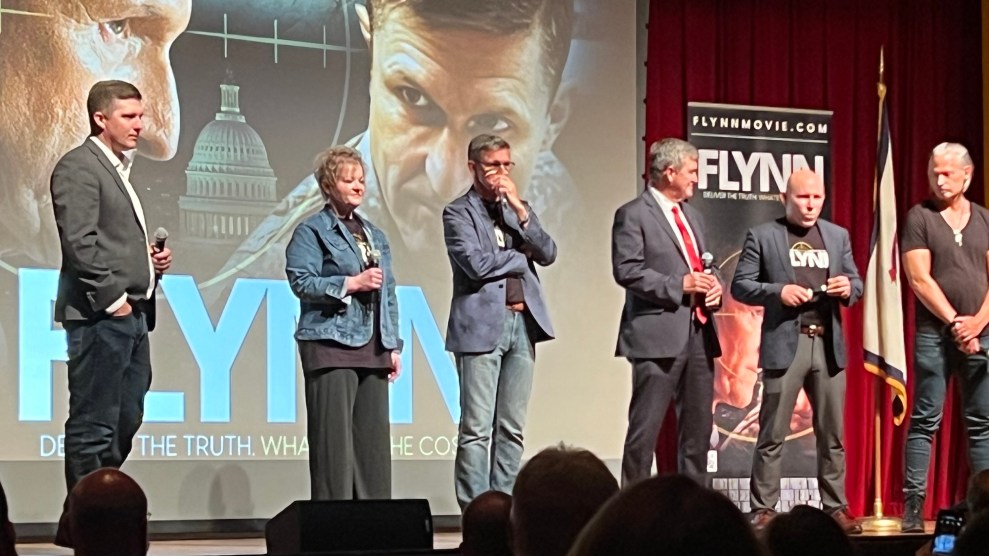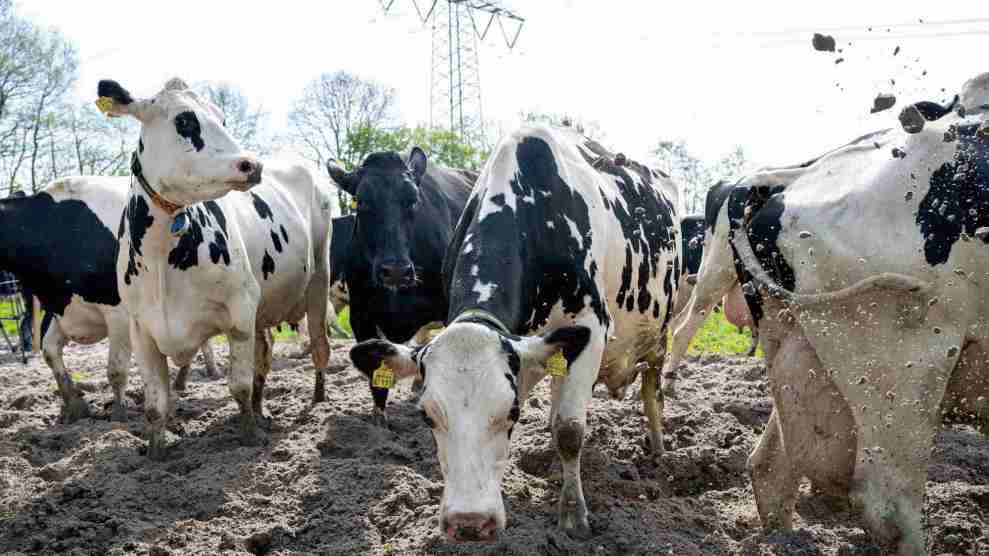Tech companies often chalk up their lack of gender diversity to a “leaky pipeline,” or a surge of women leaving engineering. But a new LinkedIn analysis of its members’ data suggests that the lack of female engineers working in tech can’t be so easily explained away.
The report, released last week, found that the tech sector employs proportionally fewer female engineers than several other industries, including healthcare, retail, government, education, and nonprofits.
The tech sector also lags in the proportion of women taking on leadership roles, according to LinkedIn’s report. The professional networking site measured the “leadership gap” in industries: the difference between female representation overall and the percentage of women in leadership roles. By this measure, the healthcare, retail, and financial services industries are doing the worst job of promoting women to top positions. But as shown in the chart below, the tech sector isn’t much better: Of the nearly 31 percent of women in the tech sector overall, just 21 percent are in leadership roles.

This latest data highlight some of the misconceptions associated with solving the persistent lack of women and minorities in Silicon Valley. LinkedIn’s report suggests that the so-called “pipeline” isn’t leaking all that much: In fact, a good number of female engineers continue to work as engineers—they’re simply choosing to take their skills to industries outside the tech sector. As Karen Catlin, a former vice president of Adobe Systems, told Fusion last week, some women avoid tech because they believe they won’t have opportunities to grow professionally: “Either there’s a very leaky pipeline and women are leaving jobs in tech,” Catlin said. “Or they are seeing they cannot have the careers they want in this industry and looking elsewhere for jobs instead.”
















